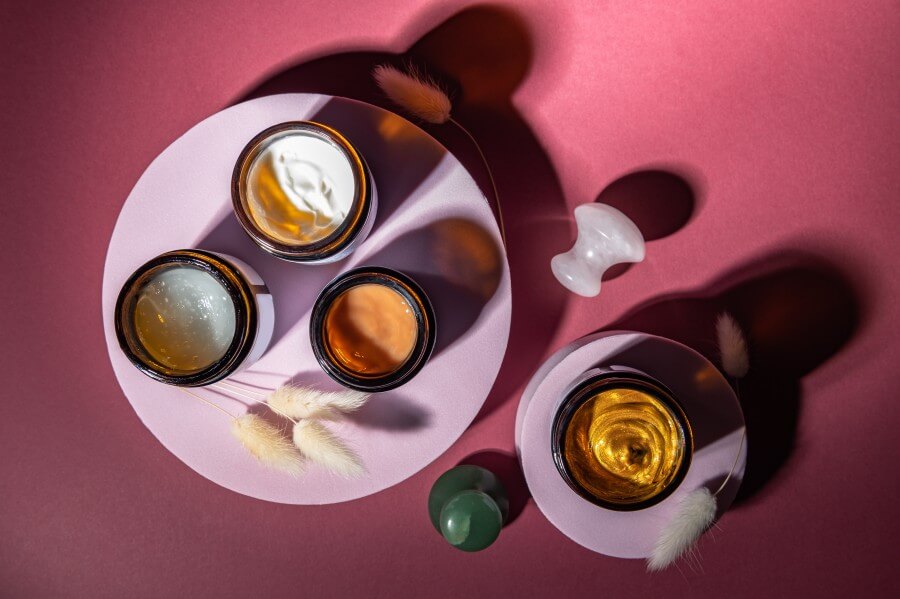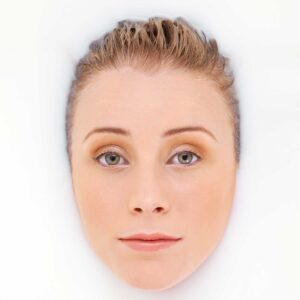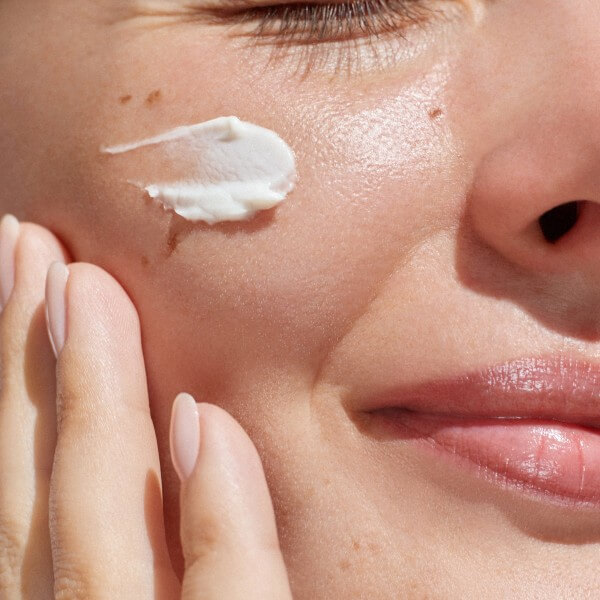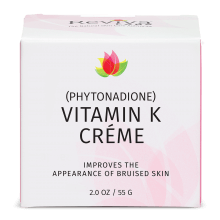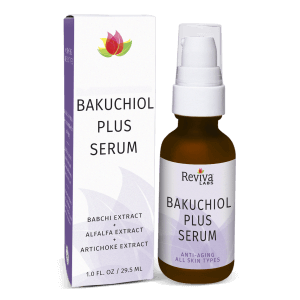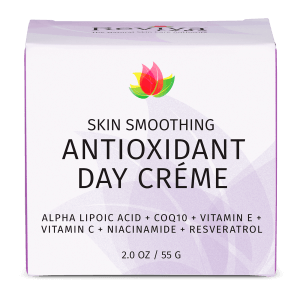Ingredients, Reviva Labs, Skin Care
Understanding the Difference: Emollients, Humectants, and Occlusives
The skincare industry offers a vast array of products designed to improve the health and appearance of our skin. Among these, emollients, humectants, and occlusives play crucial roles. Understanding the differences between them can help you choose the right product for your skincare needs.
Emollients: Softening and Smoothing
Emollients are ingredients that soften and smooth the skin. They work by filling in the tiny cracks in the skin’s surface, creating a more uniform texture. This makes the skin feel softer and look smoother. Emollients are often found in moisturizers, lotions, and creams. They are especially beneficial for dry, rough, or flaky skin.
One of the key functions of emollients is to improve the skin’s barrier function. By filling in the gaps between skin cells, they help to prevent water loss and protect the skin from environmental damage. Common emollients include ingredients like shea butter, cocoa butter, and various oils such as jojoba oil and olive oil. These natural oils are rich in fatty acids, which are essential for maintaining healthy skin.
In addition to their moisturizing benefits, emollients can also have anti-inflammatory properties. This makes them useful for soothing irritated or inflamed skin. People with conditions like eczema or psoriasis often find relief from using products that contain emollients. However, it is important to choose the right type of emollient for your skin type, as some can be too heavy for oily or acne-prone skin.
Humectants: Attracting and Retaining Moisture
Humectants are ingredients that attract water from the environment and draw it into the skin. They are crucial for maintaining hydration, as they help to keep the skin moist and supple. Humectants are commonly found in serums, gels, and lightweight lotions. They are particularly beneficial for dehydrated skin, which lacks moisture but may not necessarily be dry.
The most well-known humectant is hyaluronic acid, which can hold up to 1,000 times its weight in water. This makes it incredibly effective at hydrating the skin. Other common humectants include glycerin, urea, and alpha hydroxy acids (AHAs) like lactic acid and glycolic acid. These ingredients work by drawing moisture from the air and from the deeper layers of the skin to the surface.
Humectants are especially useful in humid climates, where there is plenty of moisture in the air for them to attract. However, in very dry environments, they may draw water from the deeper layers of the skin, which can lead to dehydration. To counteract this, humectants are often combined with emollients and occlusives in skincare formulations.
Occlusives: Sealing in Moisture
Occlusives are ingredients that form a protective barrier on the surface of the skin, sealing in moisture and preventing water loss. They are typically thicker and greasier than emollients and humectants, making them ideal for very dry or damaged skin. Occlusives are often found in ointments, balms, and heavy creams.
One of the most common occlusives is petrolatum, also known as petroleum jelly. It is highly effective at preventing water loss, but its greasy texture can be off-putting for some people. Other popular occlusives include lanolin, beeswax, and mineral oil. These ingredients create a physical barrier on the skin, which not only locks in moisture but also protects the skin from environmental irritants.
Occlusives are particularly beneficial for people with compromised skin barriers. For example, individuals with eczema or other skin conditions that cause excessive dryness can benefit from the intense hydration that occlusives provide. However, because they can be quite heavy, occlusives are often used as a final step in a skincare routine, layered over lighter products like humectants and emollients.
Combining Emollients, Humectants, and Occlusives
For optimal skin hydration, it is often best to use a combination of emollients, humectants, and occlusives. Each type of ingredient addresses a different aspect of moisture retention and skin barrier function. By layering these ingredients, you can achieve a more comprehensive approach to skincare.
A typical skincare routine might start with a cleanser that contains humectants to attract moisture to the skin. This can be followed by a serum with additional humectants and emollients to further hydrate and soften the skin. Finally, a moisturizer or balm with occlusives can be applied to lock in the moisture and provide a protective barrier.
The combination of these three types of ingredients can be particularly beneficial for people with dry or sensitive skin. By addressing multiple aspects of skin hydration and barrier function, you can achieve more effective and longer-lasting results. However, it is important to pay attention to how your skin responds to different products and adjust your routine accordingly.
Choosing the Right Ingredients for Your Skin Type
When selecting skincare products, it is important to consider your skin type and specific concerns. People with oily or acne-prone skin may prefer lightweight humectants and emollients that do not clog pores. On the other hand, individuals with dry or sensitive skin may benefit from richer emollients and occlusives that provide more intensive hydration.
It is also important to be mindful of the ingredients in your skincare products. Some ingredients, such as fragrances and alcohol, can be irritating or drying to the skin. Look for products that are free of these potentially harmful ingredients and focus on those that contain beneficial humectants, emollients, and occlusives.
One useful approach is to consult with a dermatologist or skincare professional. They can help you identify your skin type and recommend products that are best suited to your individual needs. Additionally, reading product labels and doing research on ingredients can help you make informed decisions about the products you use.
The Science Behind Hydration
Maintaining proper hydration is essential for healthy skin. According to a study published in the Journal of Clinical and Aesthetic Dermatology, moisturizers containing humectants, emollients, and occlusives can significantly improve skin hydration and barrier function. The study found that these ingredients work together to attract moisture, fill in gaps between skin cells, and create a protective barrier, resulting in more hydrated and resilient skin.
The effectiveness of these ingredients is supported by their unique properties. Humectants like hyaluronic acid draw moisture to the skin, while emollients like shea butter smooth and soften the skin’s surface. Occlusives like petrolatum seal in this moisture, preventing water loss and protecting the skin from external irritants.
Practical Tips for Skincare
To get the most out of your skincare routine, consider the following tips:
- Layering Products: Apply products in the order of their consistency, starting with the lightest (humectants) and finishing with the heaviest (occlusives).
- Patch Testing: Before using a new product, do a patch test to ensure it does not cause irritation or an allergic reaction.
- Adjusting to the Environment: In dry climates, focus on using products that provide intense hydration and protection. In humid climates, lighter formulations may be more appropriate.
- Listening to Your Skin: Pay attention to how your skin responds to different products and adjust your routine as needed. What works for one person may not work for another, so it is important to find what works best for you.
- Consistency: Consistent use of skincare products is key to achieving and maintaining healthy skin. Establish a routine that works for you and stick with it.
Know The Difference
Understanding the differences between emollients, humectants, and occlusives can help you make more informed choices about your skincare routine. Each type of ingredient plays a unique role in maintaining skin hydration and health. By combining these ingredients and choosing products that suit your skin type, you can achieve more effective and long-lasting results. Whether you have dry, oily, or sensitive skin, there are products available that can help you achieve a healthy, hydrated complexion.



